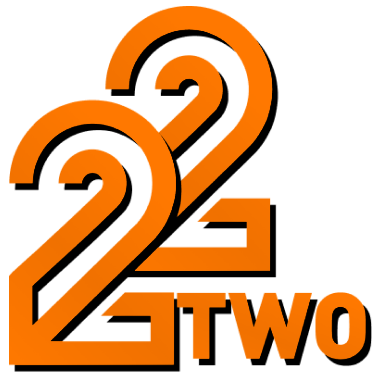What is Philippine Typhoon Today?
Last month, I found myself unexpectedly caught in the middle of a severe weather event while visiting a coastal town in the Philippines. The local news kept updating the “Philippine typhoon today” situation, which initially sounded like just another weather report. However, as the day progressed, the warnings became more urgent, and I realized that understanding the specifics of the typhoon was crucial for my safety and planning.
The phrase “Philippine typhoon today” refers to the current status and updates on tropical cyclones affecting the Philippines. These typhoons are common during the rainy season and can vary widely in strength and impact. When I first heard about the typhoon, I had doubts about how seriously to take the alerts. Growing up in a region with occasional storms, I assumed that the warnings might be exaggerated. But the situation quickly proved otherwise.
The typhoon brought heavy rains and strong winds that disrupted transportation and communication. What struck me was how the local authorities and communities stayed well-informed through official updates. I learned that these updates are often disseminated through government channels and media, emphasizing awareness and preparedness. This experience made me appreciate the importance of reliable information and how it shapes people’s responses during natural disasters.
In this context, I also noticed how some local businesses, including online platforms, adapted to the situation. For instance, I was curious if entertainment options like online gaming could provide a distraction during the storm. Interestingly, I found that some providers, operating under strict Philippine regulations, maintained their services securely despite the typhoon’s impact. This was reassuring because it showed that even in challenging times, certain digital services uphold trust and reliability, which is essential for users seeking stability.
How to Stay Updated on Philippine Typhoon Today?
During the typhoon, staying updated became a daily routine for me. Initially, I relied on social media and news websites, but I soon realized these sources could sometimes be overwhelming or inconsistent. I had to find a way to get accurate, timely, and trustworthy updates without the noise.
One practical approach I discovered was using official government portals and weather apps specifically designed for the Philippines. These platforms provide real-time tracking, warnings, and safety guidelines. For example, the Philippine Atmospheric, Geophysical and Astronomical Services Administration (PAGASA) is the primary agency responsible for weather forecasts and typhoon tracking. Their alerts were crucial to my planning, especially when deciding whether to stay put or evacuate.
At one point, power outages disrupted my internet access, and I struggled to get updates. This made me realize the importance of having multiple sources and backup plans. I started using SMS alerts and local radio broadcasts, which proved reliable even when other technologies failed. This experience taught me not to depend solely on one communication channel during emergencies.
Interestingly, this reminded me of how some online services, like gaming platforms licensed by PAGCOR, also emphasize reliability and security. Just as I needed dependable weather updates, these platforms ensure continuous service and player protection even during adverse conditions. It was comforting to know that behind the scenes, there are teams working 24/7 to monitor and secure these services, reflecting a commitment to trust and integrity.
For anyone living in or visiting typhoon-prone areas, I recommend setting up multiple alert systems and familiarizing yourself with official sources. It’s better to be over-prepared than caught off guard. Also, consider how digital services you rely on maintain their operations during such times, as this can affect your ability to stay informed or entertained safely.
What Are the Safety Precautions During a Philippine Typhoon Today?
When the typhoon warnings escalated, I had to quickly adapt to the safety measures recommended for such events. Initially, I underestimated the severity and didn’t fully prepare my surroundings. For example, I left some windows unsecured and didn’t stock enough supplies, thinking the storm would pass quickly.
That was a mistake I corrected after seeing how rapidly conditions worsened. I secured all openings, moved valuables to safer places, and prepared an emergency kit with essentials like water, food, and flashlights. Local advice emphasized staying indoors and avoiding flood-prone areas, which I followed closely.
What surprised me was how communities banded together, sharing resources and information. Neighbors checked on each other, and local authorities coordinated evacuation efforts for those in vulnerable zones. This collective approach highlighted the importance of not just individual preparedness but also community resilience.
In the midst of this, I found some unexpected comfort in online activities. Platforms like 22TWO, a well-established online gaming provider operating under PAGCOR licenses, offered a secure and responsible way to pass the time indoors. Knowing that these platforms adhere to strict regulations and maintain high security standards gave me peace of mind. It was a reminder that even during disruptions caused by natural disasters, some digital services remain reliable and safe.
If you’re facing a typhoon, my advice is to prioritize physical safety first but also consider how you can maintain mental well-being. Engaging in controlled, secure online entertainment can be a helpful distraction, especially if you’re confined indoors for extended periods.
Who Should Follow Updates on Philippine Typhoon Today and Why?
Reflecting on my experience, I realize that staying informed about the “Philippine typhoon today” is essential not just for residents but also for travelers, businesses, and anyone with interests in the region. When I was caught in the storm, I met tourists who underestimated the risks simply because they hadn’t followed the updates closely. This lack of awareness led to unnecessary stress and logistical challenges.
For residents, constant updates are a lifeline. They guide decisions about evacuation, securing property, and managing daily activities. For businesses, especially those operating online or in hospitality, understanding the typhoon’s status helps in planning operations, protecting assets, and ensuring customer safety.
I also noticed that online gaming platforms, like 22TWO, which hold Philippine gaming licenses, demonstrate how regulated industries adapt to these challenges. Their adherence to strict player protection and security standards means users can trust their services even during typhoons. This is particularly relevant for those who rely on online entertainment as a source of income or leisure during difficult times.
However, not everyone benefits equally from following typhoon updates. People in unaffected regions or those with no immediate connection to the Philippines might find the constant news overwhelming or irrelevant. For them, selective monitoring or relying on broader regional reports might be sufficient.
In summary, anyone with ties to the Philippines—whether through residence, travel, or business—should prioritize staying informed about typhoons. It’s a matter of safety, preparedness, and sometimes, peace of mind.
—
If you’ve experienced a typhoon or have tips on staying safe and informed, please share your story in the comments. Feel free to save or share this post to help others navigate the challenges of Philippine typhoons with better understanding and preparedness.



